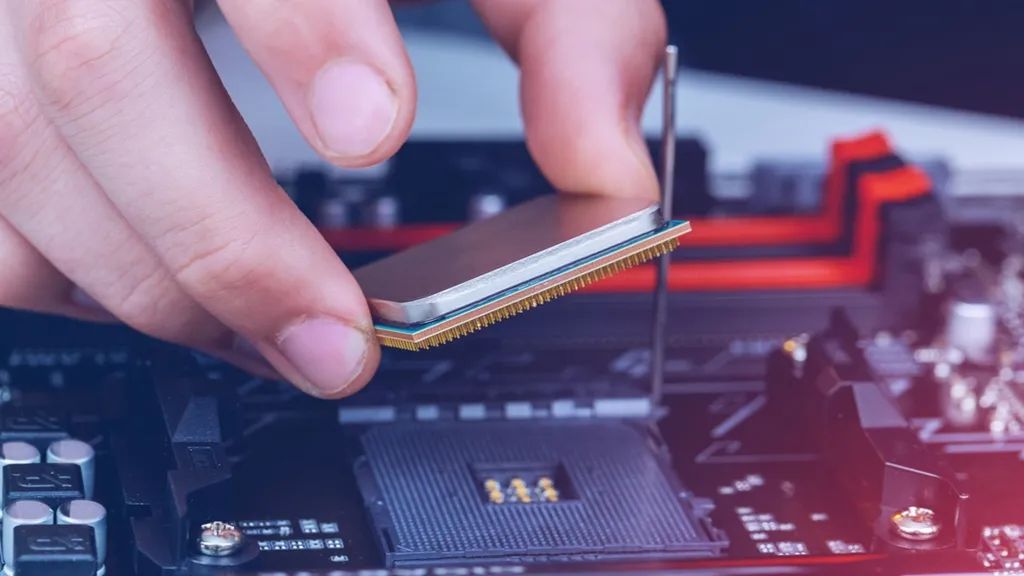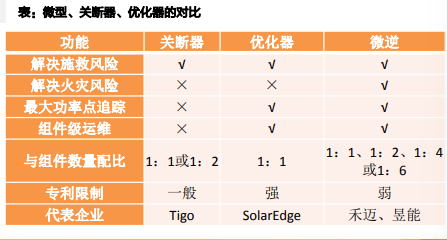Dispute Moore's Law, Intel refutes Nvidia's "ending theory"
Author:First financial Time:2022.09.29
29.09.2022

Number of this text: 2738, the reading time is about 5 minutes older
Introduction: Even if the number of transistor accumulation is achieved, the surge in costs has begun to stop the pursuit of advanced processes and think about the rationality of Moore's law itself.
Author | First Finance Li Na Fan Xuehan
As the golden law of the computer industry, Moore's Law has always guided chip development. However, as the chip process has slowed down, the disputes around this law are also expanding.
In the early morning of September 28, in the face of Moore's Law's "crisis of trust", Intel CEO Pat Gelsinger said that at least in the next ten years, Moore's law was "still valid". However, a week ago, Huang Renxun, the founder and CEO of Nvidia, expressed the opposite view. Huang Renxun said in an interview that the expectations of double performance at similar costs have become the past for the chip industry, and "Moore's Law is over."
The differences between the two chip giants on Moore's law show the current chip companies' uncertainty about the direction of technological evolution. Even if the number of crystal piles is achieved, the surge in costs has begun to stop the pursuit of advanced processes and think about the rationality of Moore's law itself.
Nvidia VS Intel: Is Moore's law outdated?
The Law of Moore was proposed by Gordon Moore, co -founder of Intel in the 1960s that the number of transistors that can be accommodated on the chip industry in the chip industry was gradually evolved in the 1960s. It will double. In other words, the performance of the processor doubles every two years, and the calculation cost is decreased.
From the perspective of the industry, the industry has always followed this law and named the new process node according to 0.7 times the previous generation process. This linear upgrade just brings the crystal integrated density. Therefore, 90 nanometer, 65 nanometer, 45 nanometer, and 32 nanometer -each generation of process nodes can accommodate the transistor twice as many as the previous generation.
This pursuit of advanced processes has also greatly promoted the development of the computing industry, thereby breeding high -speed Internet, smartphones and current car networking, smart refrigerators and automatic thermal regulators.
However, with the development of technology, with the process from micron levels to nano -level, more and more silicon circuits are integrated in the same small space, but the heat generated is getting larger and larger. The realization of double the realization becomes weak.
From the perspective of the industry, the processing of transistor that is constantly approaching the physical limit has already made the existing photocalism technology "unbearable". The significant increase in the CPU crystal tube and energy so that the application performance is only a slight increase. Bottleneck. In addition, the biggest "noise" in Moore's law questioned from the balance of technology and cost.
Nvidia believes that as the chip architecture becomes more complicated, silicon chips become more expensive.
Huang Renxun said in an interview with a reporter, including the First Financial, said, "Today's 12 -inch wafers are much more expensive, not a little more expensive, it is very expensive. Using more methods, inventions such as RTX, DLSS, SCR, Tensor Cores enable us to continue to overcome the increase in costs. "
Taking the cost of wafer foundry as an example, according to the research data released by the Security and Emerging Technology Center (CSET) at the Volsh Institute of Diplomacy of Georgeton University in the United States, TSMC adopts a 12 -inch wafer of the 3nm process. $ 30,000, about 1.75 times of 5nm. In the case of the unchanged area of the nude (DIE) (that is, the upgrade architecture, the number of transistors does not increase), and the yield remains unchanged, if the Apple A17 processor will use a 3nm process in the future, the cost will rise to $ 154/piece and become the iPhone No. 1 A large -cost parts, and 5nm A15 processor turned out to be the third largest cost component of the iPhone.
"Increased costs have indeed put pressure on some chip companies." Counterpoint analyst Brady told First Financial reporter that some Nvidia's products changed from Samsung's 8nm to 4 nanometers in TSMC, and the cost was doubled by double the cost. After all, the rise in chip foundry costs will change the technical path of the company's selection.
But in Intel's view, Moore's Law will not end because of useless use, nor will it be blocked by insufficient economic benefits. At present, Intel is still actively trying to plug more transistors on a single chip.
Kissinger mentioned in a speech on the 28th that Intel is advancing the progress of manufacturing, such as using new photoresters and RibbonFet architectures, which allows the company It becomes small enough to measure it with Er (0.1 nanometer) units.
"We want to start from a single packaging of about 100 billion crystal tubes from today's single packaging. By the end of this decade, it will be added to a single packaging. Still effective.
Who will save "Moore's Law"
"Moore's Law is not a natural law, but an observation or prediction of the development of integrated circuit performance. For more than half a century, the semiconductor industry has roughly developed in accordance with the law of Moore. This is. "Zhao Xiaoma, a CIC Burning Consultation partner, told reporters that now it seems that Moore's Law has gradually encountered a bottleneck. The problems such as the physical limits of chip size, photocalism technology, tunnel effects, power consumption and heat dissipation, and power supply capacity, from 5nm to 3nm to 2nm, the interval has exceeded 2 years. Zhao Xiaoma believes that the semiconductor industry is now more like entering the Moore era, and new technical routes need to be expanded to continue Moore's law. New integration, new materials, and new architecture have gradually become the focus of subverting innovation. The new integration includes Chiclet and advanced packaging. Chiclet has received widespread attention due to its high performance, low power consumption, high area usage and low cost, and has high potential in high -performance computing markets such as FPGA and GPUs. "
Taking CHIPLET as an example, this technology is usually translated as "core" or "small chip". It can be understood by literally as a "smaller -granular chip". It is a means to increase the integration of chips under advanced processes, so as to improve computing power without changing the process and ensure the yield of chip manufacturing.
For example, in a 7nm process chip, some minor modules can be made with a lower process such as 22nm, and then "assembled" to 7nm chip. The principle is like building blocks. Reduce the dependence on the 7nm process. The Chiclet mode is also one of the direction of the semiconductor process development under Moore's law.
As of now, many chip giants including Intel and AMD have stated that they have already introduced Chiclet design in the product. Huawei launched a 7nm Kunpeng 920 processor based on Chiclet technology in 2019. AMD launched a third -generation server processing chip based on TSMC 3D Chiclet packaging technology in March this year. Apple launched the M1 Ultra chip using TSMC COWOS-S-S bridge.
In addition, Zhao Xiaoma said that advanced packaging technology is also one of the key investment directions of giants such as Intel and TSMC, thereby alleviating the disappearance of Moore's law. "At present, there are mainly inverted packaging, wafer -level packaging, 2.5D/3D packaging, and SIP system -level packaging in the industry. New materials are mainly third -generation semiconductor materials based on SIC, GAN, and GaaS. High -power, high -pressure high temperature and other characteristics are widely used in the fields of 5G, photovoltaic and other fields. The new architecture refers to the new chip architecture that breaks through the vonorman architecture, such as heterogeneous computing, RISC -V streamlined instruction set architecture. Nvidia key points Investment new architecture to promote acceleration computing, the newly launched Hopper GPU architecture has significantly improved the performance of AI computing. "
"Moore's law is not a competition." Mark Bohr, a senior academician of Intel, previously said at a manufacturing conference that it may reach the physical limit one day, but in 1990, when the size of the crystal tube on the wafer has reached the use When the wavelength (193 nanometer) of their light (193 nanometers), the physics community clearly pointed out that it can no longer be advanced, but the calculation models and multiple exposures have span that challenge.
In Intel's opinion, Moore's law has "failed" many times, but each time can achieve breakthroughs in key technologies and continue. "At this time, the entire industry chain needs to be cooperated together. To improve the micro -shrinking process, the light carved machine needs to be promoted to the level that can more detailedly to portray these characteristics." The progress is not the power of the family, but if everyone believes in Moore's law, it can continue to continue with a certain rhythm, and it will continue to emerge with new technologies. Even under the CMOS process, it can still be advanced below 2nm.
Brady told reporters that from the perspective of industry development, Moore's law will continue in the next five years. "But the biggest problem now is the growth of the demand part. Whether there are still so many small and fast product demand in the future, whether the demand for mobile phones is decreasing, whether the automotive and IoT devices can become the estuary of the new technology. This is the most urgent. The problem is also the biggest motivation for enterprises to invest in advanced technology. "
- END -
Large, medium -sized screen linkage ultra -high -definition video promotes cross -screen integration spread

December 31, 2021 Beijing Radio and Television Winter Odao Documentary 8K ultra -h...
"Wind Research Report · Circuit" has nearly 20 times the market share increase space+high growth+high ROE, and overseas light storage continues to erupt!One article understands why micro -inverted penetration rate increases?What are the competitive barriers?

The demand for optical storage in Europe will continue to outbreak, and the curren...